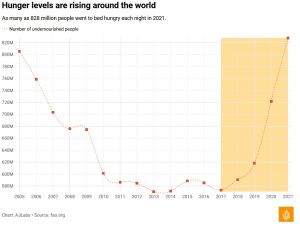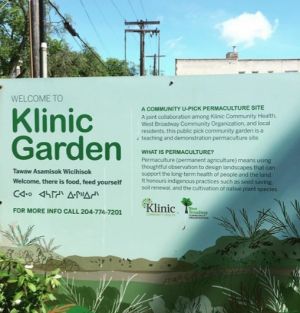Agroecology
Agroecology is the application of ecological concepts, the study of relationships between plants, animals, people, and their environment - and the balance between these relationships, and principals in farming.[1]
In the context of Food Sovereignty, localization, and Bioregionalism utilizing agroecology is key to transitioning away from and repairing the destructive effects[2] of industrial agriculture.[3]
Mycelium
Mycorrhizal symbioses is a powerful tool to be employed in agroecological settings. Mycelium is highly efficient in facilitating plan nutrient uptake, water distribution and overall crop production.[4][5] Mycelium is able to increase Phosphorus and Nitrogen uptake and use efficiency,[6][7] which is vital in the transition away from Industrial Agriculture and artificial fertilizers. Mycelium can also help plants adapt to bioitic and abiotic stressors- increasing overall crop quality.[8][9]
Biofertilizer
https://www.mdpi.com/2071-1050/11/14/3824
Agroecological Service Crops
Service crops are plants grown not for yield purposes, but to provide particular ecosystem services to the agrosystem. In no-till environments these crops can be utilized to prevent the spread of invasive weeds and do avoid detrimentally disturbing microorganisms in upper soil layers and mycorrhizal fungi.[10][11][12]
"Weeds"
Weeds are typically viewed in a negative light especially in the context of Industrial Agriculture. Looking at weeds through an agroecological lens shows how there are many practical uses and benefits to letting certain types of weeds grow. One example is spontoaneous flora promoting plant diversity and belowground interactions include Mycelium.[13]
Agroforestry
Soil Health
Crop Production
World Hunger
Industrial Agriculture produces massive amounts of mono-cultured food stocks, but there are still millions of people across the globe who go hungry everyday or die from starvation. According to the 'Food Security Information Network' in 2022 258 million people across 58 countries/ territories faced high levels of acute food insecurity which was an increase from the 193 million people in 2021.[15]
Because not all countries were included in these studies the number of people who go hungry is much higher; Between 702 and 828 million people go hungry every day according to the 2022 'State of Food Security and Nutrition in the World' report published by a joint collaboration under the United Nations.[16] World hunger rose further in 2021 after the emergence of the COVID-19 Pandemic:
... After remaining relatively unchanged since 2015, the prevalence of undernourishment (PoU) jumped from 8.0 to 9.3 percent from 2019 to 2020 and rose at a slower pace in 2021 to 9.8 percent.
It is estimated that between 702 and 828 million people were affected by hunger in 2021. The number has grown by about 150 million since the outbreak of the COVID-19 pandemic – 103 million more people between 2019 and 2020 and 46 million more in 2021, considering the middle of the projected range.
The further increase in global hunger in 2021 reflects exacerbated inequalities across and within countries due to an unequal pattern of economic recovery among countries and unrecovered income losses among those most affected by the COVID-19 pandemic, all in a context of diminishing social protection measures that had been implemented in 2020.[17]
Even more people were moderately or severely food insecure in 2021 with the number reaching 2.3 billion or nearly 30 percent of the global population, which is 350 million more people than 2019 or before the COVID-19 Pandemic began.[18]
Gender Inequality
The gender gap in food insecurity – which had grown in 2020 under the shadow of the COVID-19 pandemic – widened even further in 2021, driven largely by the widening differences in Latin America and the Caribbean, as well as in Asia. In 2021, the gap reached 4.3 percentage points, with 31.9 percent of women in the world being moderately or severely food insecure compared to 27.6 percent of men.[19]
Solutions to Hunger
See: Food Sovereignty | Just Transition | Agroecology
Permaculture
Definition
Permaculture (permanent agriculture) means using thoughtful observation to design landscapes that can support the long-term health of people and the land. It honours indigenous practices such as seed saving, soil renewal, and the cultivation of native plant species.
Stacking Functions
Stacking functions is both a simple and powerful principle and practice of permaculture design. In recognizing that many if not all elements within an ecosystem have multiple functions, stacking functions reduces waste and increases syntropy by incorporating multiple benefits wherever possible. For example:
A fruit tree might serve multiple purposes over its lifetime — food, shade, habitat, micro-climates for companion plants, visual barriers for privacy, contributing to soil fertility, green mulch (through dropped leaves), and wood at the end of its life.[20]
Audrey Logan
Background
Audrey Logan is a Nehiyaw (Cree)/Métis woman from Northern Alberta, then a global traveler, now living in urban Winnipeg, Manitoba. She is a longtime community gardener and traditional foods educator, and you can find her in the garden in almost any weather, with her brightly coloured shawl and a pitchfork made of deer antlers. Food dehydration came into Audrey’s life at a time when she was suffering from extreme health issues. As a person living with permanent disabilities stemming from childhood abuse (Audrey is a 60’s Scoop survivor), as well as living on the meagre disability assistance provided by the provincial government, she had fewer resources than many do when it came to dealing with her health:
“I’m laying in bed at 300-some pounds thinking how am I going to make this better, when I can’t afford the food that’s going to make me better? Doctor said i can only have this and this, but i can’t afford this and this. But I think about my auntie and my kookum, and they didn’t have all the fancy materials, all the way up there in the bush, how did they do it? I’m sitting here in the middle of everywhere, food dripping from the trees. What’s my excuse?” [21]
Klinic Garden
Auntie formed and runs the Klinic Garden in Winnipeg in the West broad way neighborhood. The sign at the entrance of the gardens describes the site as “A Community U-Pick Permaculture Site,” and continues to explain how the garden is a community collaboration effort and a “teaching and demonstration permaculture site.” The sign also declares with Cree Syllabics: “Welcome, there is food, feed yourself.”
Sources
- ↑ https://www.soilassociation.org/causes-campaigns/a-ten-year-transition-to-agroecology/what-is-agroecology/
- ↑ https://www.unep.org/news-and-stories/story/10-things-you-should-know-about-industrial-farming
- ↑ Botelho, M. I. V., Cardoso, I. M., & Otsuki, K. (2015). “I made a pact with God, with nature, and with myself”: exploring deep agroecology. Agroecology and Sustainable Food Systems, 40(2), 116–131. doi:10.1080/21683565.2015.11157
- ↑ Smith, S.E.; Read, D.J. Mycorrhizal Symbiosis, 2nd ed.; Academic Press: London, UK, 1997; ISBN 9780080559346.
- ↑ Van der Heijden, M.G.A.; Klironomos, J.N.; Ursic, M.M.; Moutoglis, P.; Streitwolf-Engel, R.; Boller, T.; Wiemken, A.; Sanders, I.R. Mycorrhizal fungal diversity determines plant biodiversity, ecosystem variability and productivity. Nature 1998, 396, 69–72.
- ↑ Hill, J.O.; Simpson, R.J.; Ryan, M.H.; Chapman, D.F. Root hair morphology and mycorrhizal colonisation of pasture species in response to phosphorus and nitrogen nutrition. Crop. Past Sci. 2010, 61, 122–131.
- ↑ Trinchera, A.; Testani, E.; Ciaccia, C.Q.; Campanelli, G.; Leteo, F.; Canali, S. Effects induced by living mulch on rhizosphere interactions in organic artichoke: The cultivar’s adaptive strategy. Renew. Agr. Food Syst. 2016, 32, 214–223.
- ↑ Miceli, A.; Romano, C.; Moncada, A.; Piazza, G.; Torta, L.; D’Anna, F.; Vetrano, F. Yield and quality of mini-watermelon as affected by grafting and mycorrhizal inoculum. J. Agr. Sci. Tech. 2016, 18, 505–516.
- ↑ Salvioli, A.; Novero, M.; Lacourt, I.; Bonfante, P. The Impact of Mycorrhizal Symbiosis on Tomato Fruit Quality. In Proceedings of the 16th IFOAM Organic World Congress, Modena, Italy, 16–20 June 2008
- ↑ Canali, S.; Diacono, M.; Campanelli, G.; Montemurro, F. Organic no-till with roller crimpers: Agro-ecosystem services and Applications in organic Mediterranean vegetable productions. Sustain. Agric. Res. 2015, 4, 70–79.
- ↑ Campanelli, G.; Testani, E.; Canali, S.; Ciaccia, C.; Leteo, F.; Trinchera, A. Effects of cereals as agroecological service crops and no-till on organic melon, weeds and N. dynamics. Biol. Agric. Hort. 2019, 35, 275–287.
- ↑ Navarro-Miró, D.; Blanco-Moreno, J.M.; Ciaccia, C.; Chamorro, L.; Testani, E.; Kristensen, H.L.; Hefner, M.; Tamm, K.; Bender, I.; Jakop, M.; et al. Agroecological service crops managed with roller crimper reduce weed density and weed species richness in organic vegetable systems across Europe. Agron. Sust. Dev. 2019, 39, 55.
- ↑ Trinchera A, Warren Raffa D. Weeds: An Insidious Enemy or a Tool to Boost Mycorrhization in Cropping Systems? Microorganisms. 2023 Jan 29;11(2):334. doi: 10.3390/microorganisms11020334. PMID: 36838299; PMCID: PMC9967897.
- ↑ https://www.aljazeera.com/news/2023/5/28/why-is-global-hunger-on-the-rise-2
- ↑ FSIN and Global Network Against Food Crises. 2023. GRFC 2023. Rome.; https://www.fsinplatform.org/sites/default/files/resources/files/GRFC2023-hi-res.pdf
- ↑ FAO, IFAD, UNICEF, WFP and WHO. 2022. The State of Food Security and Nutrition in the World 2022. Repurposing food and agricultural policies to make healthy diets more affordable. Rome, FAO. https://doi.org/10.4060/cc0639en
- ↑ FAO, IFAD, UNICEF, WFP and WHO. 2022. The State of Food Security and Nutrition in the World 2022. Repurposing food and agricultural policies to make healthy diets more affordable. Rome, FAO. https://doi.org/10.4060/cc0639en
- ↑ FAO, IFAD, UNICEF, WFP and WHO. 2022. The State of Food Security and Nutrition in the World 2022. Repurposing food and agricultural policies to make healthy diets more affordable. Rome, FAO. https://doi.org/10.4060/cc0639en
- ↑ FAO, IFAD, UNICEF, WFP and WHO. 2022. The State of Food Security and Nutrition in the World 2022. Repurposing food and agricultural policies to make healthy diets more affordable. Rome, FAO. https://doi.org/10.4060/cc0639en
- ↑ https://ixchel.love/stacking-functions-healthy-garden/
- ↑ http://www.nmfccc.ca/uploads/4/4/1/7/44170639/dehydration_nations_zine.pdf


